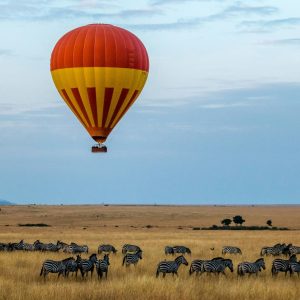Lake Nakuru National Park
Lake Nakuru National Park is one of Kenya’s premier national parks, located in the Great Rift Valley, around 160 kilometers northwest of Nairobi. The park is centered around Lake Nakuru, a shallow, alkaline soda lake that is part of the larger Rift Valley lakes ecosystem. Established in 1961, Lake Nakuru National Park is renowned for its stunning landscapes, diverse wildlife, and the spectacular birdlife that draws visitors from around the world.
Wildlife and Birdwatching
Lake Nakuru is famous for its prolific birdlife, particularly its massive flocks of flamingos that sometimes number in the millions. These birds are attracted to the lake by the abundant algae that thrive in its alkaline waters. The sight of thousands of pink flamingos fringing the lake’s edge creates a striking visual spectacle, which has earned the lake a reputation as one of the world’s greatest bird spectacles.
In addition to flamingos, the park is home to over 400 other bird species, including pelicans, herons, African fish eagles, and cormorants, making it a paradise for birdwatchers.
Lake Nakuru National Park is also a sanctuary for a variety of mammal species. It is one of the best places in Kenya to see both the black and white rhinoceros, as the park hosts a significant rhino population due to successful conservation efforts. The park also offers a chance to spot lions, leopards, buffalos, zebras, giraffes (including the rare Rothschild giraffe), and various species of antelopes such as impalas, waterbucks, and gazelles.
Scenic Landscapes and Attractions
The park’s landscape is diverse and scenic, ranging from the lake’s sparkling waters and surrounding marshes to wooded and bushy grasslands and rocky cliffs. The iconic Baboon Cliff offers panoramic views of the lake and its surroundings, making it a popular spot for photography and picnics. Makalia Falls, a picturesque waterfall within the park, is another popular attraction.
Euphorbia forests and acacia woodlands add to the park’s diverse ecosystem, supporting a variety of flora and fauna. The park’s varied topography makes it an excellent destination for nature walks, game drives, and birdwatching excursions.
Conservation Efforts
Lake Nakuru National Park plays a vital role in wildlife conservation, especially for endangered species. The park is fenced to protect both its wildlife from poachers and the surrounding communities from wildlife encroachment. The establishment of the rhino sanctuary within the park has been particularly successful in boosting the population of both black and white rhinos, making it a key stronghold for these threatened species.
Visitor Experience
Visitors to Lake Nakuru National Park can enjoy a range of activities, including game drives, birdwatching, guided nature walks, and photography. The park is accessible year-round, but the best time to visit is during the dry season (from July to October and January to March) when wildlife is more easily spotted around the water sources.
Lake Nakuru National Park offers a unique blend of stunning landscapes, rich biodiversity, and remarkable birdlife, making it a must-visit destination for nature lovers, birdwatchers, and photographers alike. Its efforts in conservation, especially for the rhino populations, highlight its importance as a sanctuary for wildlife in Kenya.
Other Attraction Sites

Masai Mara
Best known for yearly Wildebeest migration, big cats and lots of wildlife

Lake Naivasha
The park is known for its “Big Five” residents: elephants, lions, leopards, rhinos, and buffalo

Samburu
View the Samburu Special Five: Somali Ostrich, Beisa Oryx, Grevy's Zebra, Reticulated Giraffe & Generuk

Tsavo East
Largest park with red-soiled elephant herds and maneless lions

Ol Pejeta
The only place in Kenya for you to see Chimpanzee in the Sweetwater Chimpanzee Sanctuary